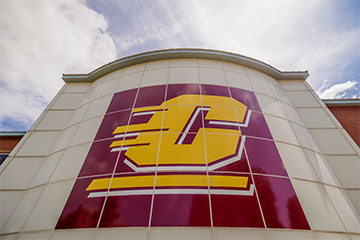Priority four: Ensure institutional sustainability

Priority four
Ensure Institutional Sustainability — Embrace sustainable campus operations that ensure wise stewardship of our resources.
Objectives
- Adopt agile and lean business practices and systems that ensure efficiency, maintain a focus on solutions, and meet or exceed industry standards.
- Invest in and expand our operational focus on the efficient use of energy, reduction of waste and consumption, sustainable development, sustainability, and environmental responsibility.
- Strategically invest in and rebalance our portfolio of educational offerings to meet current and future learner, employer and societal needs while remaining accessible and affordable.
- Foster a culture of continuous improvement and informed risk-taking through reinvestment of funding into either new programs that create impact or into ideas that create efficiencies.
- Implement strategies for new and diversified revenue streams with a focus on enhancing advancement and fundraising activities and identifying mutually beneficial partnerships with other organizations to further the goals of CMU.
2025-2026 SMART goals
Updated and approved by the CMU Board of Trustees September 18, 2025
- Foster a university-wide culture of continuous improvement with a focus on:
- Continuing to review policies and processes that result in inefficiency or stymie innovation and appoint a cross-divisional team to carry it out.
- Measure: Number of policies reviewed, changed or deleted and new processes created by August 2026.
- University stakeholders expanding the portfolio of new non-traditional educational offerings.
- Measure: In coordination with working group 1.3 and other campus partners creating new educational offerings, develop a realistic implementation timeline for Anthology as the comprehensive learner record to transcript non-traditional educational offerings by May 2026.
- Pursuing additional opportunities for partnerships with other organizations to further the goals of CMU. In the near-term, focus on expanding community college partnerships and workforce development opportunities.
- Measure: Develop a plan with specific action steps by Spring 2026.
- Creating and implementing a comprehensive technology plan to identify and prioritize academic and operational needs.
- Measure: Support and monitor the initial plan, and update the plan (with future milestones), by August 2026.
- Continuing to review policies and processes that result in inefficiency or stymie innovation and appoint a cross-divisional team to carry it out.
- Embed broader representation into future capital project planning by using community-based approaches.
- Measure: Develop a memorandum of understanding to inform standard operating procedures in future capital projects that ensure proper campus representation is institutionalized in planning meetings by May 2026.
- Initiate a comprehensive review of programs and strategies targeted towards student retention.
- Measure: Develop a process to evaluate the effectiveness and return on investment of retention efforts and present findings to the president and others for their review and decision on opportunities to expand, revamp, or discontinue by May 2026.
- Measure: Complete an initial review of student socialization and mentoring offerings using a promising practices framework by May 2026.
- Continue implementing the planning phase and the silent/leadership giving phase strategies for the Forge the Future comprehensive campaign. This includes ongoing efforts for staffing, technology, development of university priorities, lead prospect identification, qualification and solicitation, campaign communications, and public kick-off in 2026.
- Measure: Finalize and implement campaign strategies for a successful kick-off of the comprehensive campaign by August 2026.
- Develop and implement initiatives and strategies that foster deep, long-lasting connections with prospective students (PK-12 and beyond) and supporters by delivering meaningful, value-driven experiences within our university community. This will enhance university affinity, ultimately strengthening our market position.
- Measure: Complete an inventory of events and offerings that engage with prospective students to assist in broader coordination of university resources with a focus on intentionality by May 2026.
- Measure: Develop a recommended plan to enhance communication and coordination with respect to affinity-building events and offerings by August 2026.
- Develop a strategic enrollment management plan to recruit and retain students with unique strategies based on specific student populations (Undergraduate, Graduate, International, and Online).
- Measure: Develop the plan, with annual goals, by December 2025.
- Measure: Implement the initial set of prioritized recommendations from the strategic enrollment management plan by the Summer of 2026.
- Develop a data analysis structure and process for exit surveys.
- Measure: Inventory current exit survey tools and processes being utilized across campus for broader discussion and integration into an instrument that can be leveraged university-wide and provide a recommendation for an institutionalized instrument and process by August 2026.
Update on 2024-2025 Progress
- CMU completed another record-breaking year in fundraising, securing $79 million in philanthropic giving. The University Advancement team is on-track for launch of the Forge the Future comprehensive campaign in Fall 2026.
- A total of 31 policies were reviewed or in the formal review process as of August 11, 2025. With the formal governance review structure now in place, the working group is engaging division leaders to identify and prioritize policies for future review.
- CMU has formalized a partnership with an external vendor called Anthology to develop the Comprehensive Learner Record platform, with plans for a pilot project in Fall 2025.
- In Fall 2025, CMU established a working group to focus on expansion of community college partnerships and workforce development opportunities.
- The Office of Information Technology completed a university-wide network upgrade in FY 2024-2025.
- Retention rates among first-to-second year and second-to-third year students increased this year. The working group focused on these outcomes is compiling an inventory of campus-wide retention initiatives.
2023-2024 Progress
In 2024, CMU surpassed fundraising goals and secured more than $29.5 million in philanthropic support. First-to-second year retention rates increased to 74.9%. CMU established a policy review governance structure and began reviewing policies; it also launched a more easily searchable webpage for administrative policies. Finally, the university adopted the 25Live platform for room reservations and event planning and began to develop training materials for users.

















